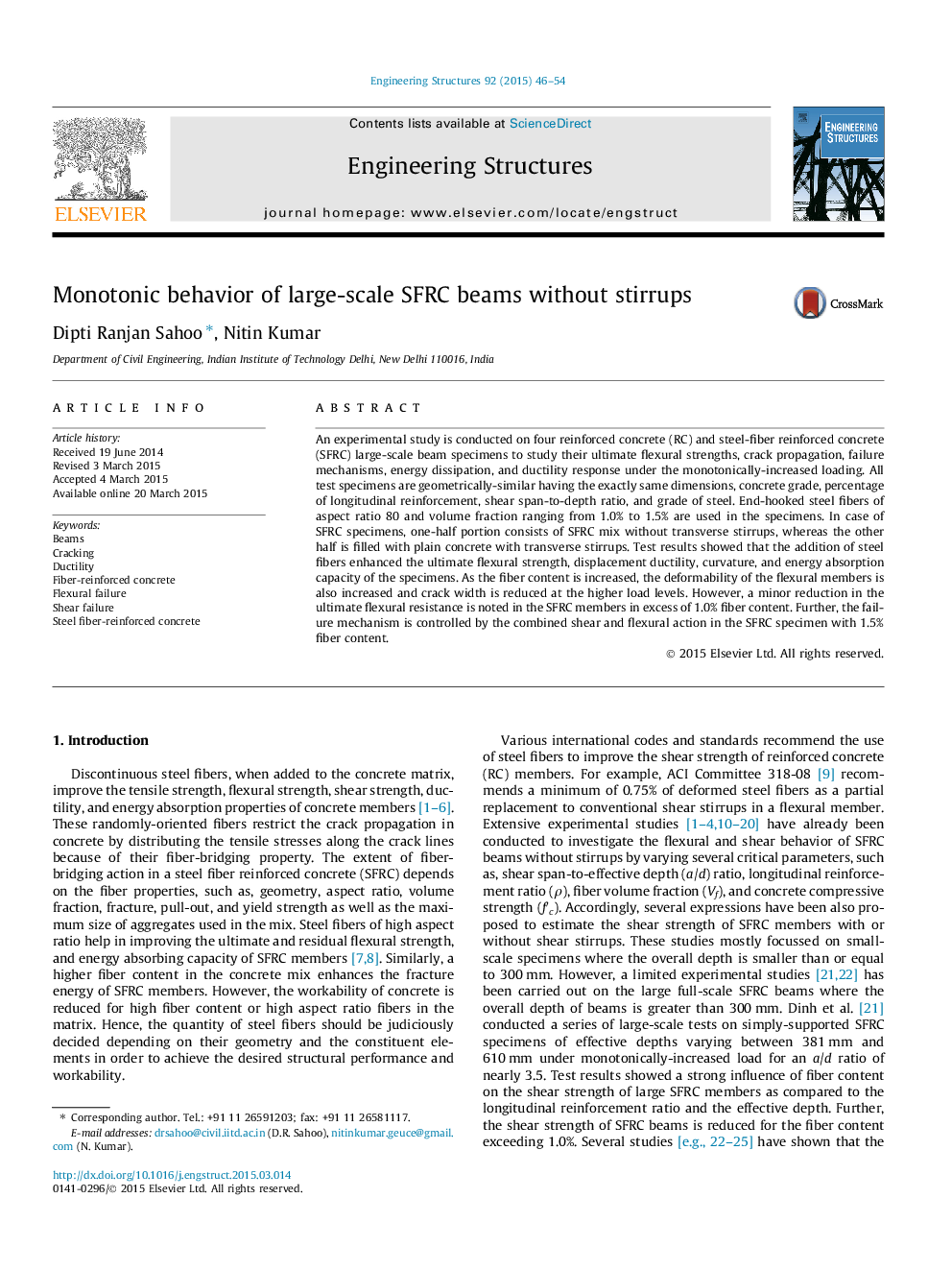| Article ID | Journal | Published Year | Pages | File Type |
|---|---|---|---|---|
| 266321 | Engineering Structures | 2015 | 9 Pages |
•Fiber content beyond 1% results in a minor reduction in the ultimate resistance.•Addition of steel fibers increased the ultimate resistance and ductility.•SFRC beam with 1.5% fiber content is failed by both shear and flexural action.•Curvature and energy absorption capacity of SFRC beams significantly improved.
An experimental study is conducted on four reinforced concrete (RC) and steel-fiber reinforced concrete (SFRC) large-scale beam specimens to study their ultimate flexural strengths, crack propagation, failure mechanisms, energy dissipation, and ductility response under the monotonically-increased loading. All test specimens are geometrically-similar having the exactly same dimensions, concrete grade, percentage of longitudinal reinforcement, shear span-to-depth ratio, and grade of steel. End-hooked steel fibers of aspect ratio 80 and volume fraction ranging from 1.0% to 1.5% are used in the specimens. In case of SFRC specimens, one-half portion consists of SFRC mix without transverse stirrups, whereas the other half is filled with plain concrete with transverse stirrups. Test results showed that the addition of steel fibers enhanced the ultimate flexural strength, displacement ductility, curvature, and energy absorption capacity of the specimens. As the fiber content is increased, the deformability of the flexural members is also increased and crack width is reduced at the higher load levels. However, a minor reduction in the ultimate flexural resistance is noted in the SFRC members in excess of 1.0% fiber content. Further, the failure mechanism is controlled by the combined shear and flexural action in the SFRC specimen with 1.5% fiber content.
